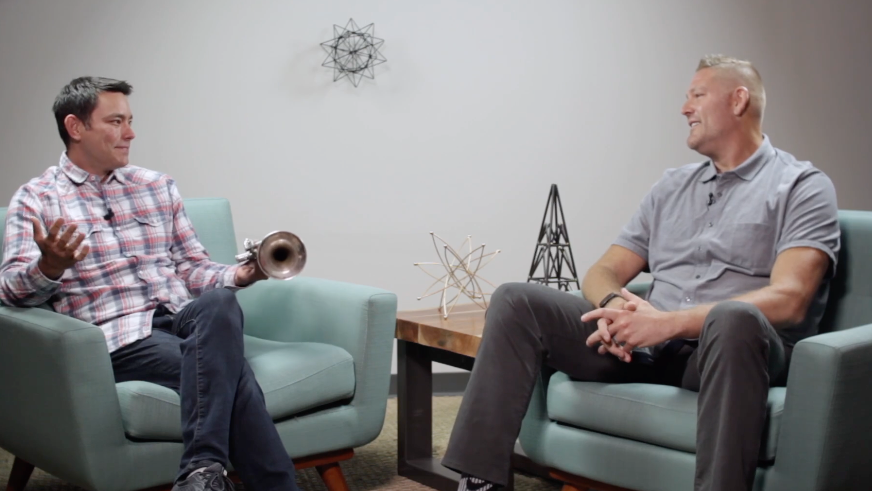Grow Your Confidence In Executive Interactions
Have you noticed that more and more decisions are being made by higher-ups in an organization? As a result, you may find yourself involved in ...

Executive conversations can be tough. This framework can help you lead executive conversations in order to close more business.
I remember it like it was yesterday. I designed a personnel restructuring and hiring plan for my organization to help us scale to meet the requirements being placed on us by our latest PE investor. I had gone over the details and gained the support of Sue, my executive sponsor. She then invited me to present the plan to the senior leadership team. I always considered her a collaborative and amiable leader. For example, she told me the board had been briefed and supported the plan. However, she went on to say that the board had a few questions about the project before providing their final approval. After Sue’s guidance, I believed I was well prepared for the presentation and meeting.
Friday morning came around, and I joined the video conference. My objective was to briefly review the plan with the board, confidently answer their questions, and request their final approval. But, the meeting started with Sue aggressively questioning every last detail of the plan. What?! She questioned why we couldn’t meet the targets without such an aggressive change. She was assertive, direct, and to the point. The rest of the board had a couple of questions, but nothing like what she put me through. I left confused and frustrated.
Has something like this ever happened to you during an internal executive presentation or external customer engagement? Have you ever spent hours upon hours prepping for an executive engagement and then helplessly watched it go in a completely different direction? Well, I learned a very valuable lesson that day that I want to share with you. With executive engagements, be prepared to adapt to a change in their mode. I later learned that Sue shifted her Executive Mode based on the pressure being applied by her peers. She went from being an amiable executive to a driver! I wasn’t ready for this and felt a total loss of control. We still got the org plan approved, but the path to success was pretty bumpy. In my experience, recognizing the mode of an executive and adjusting your approach is one of the most effective techniques in leading successful executive engagements.
What do I mean by “executive modes.” Think about it this way. Everyone has a personality. Whether friendly and energetic or more reserved and analytical, a person’s personality changes very little over time. But, you may have noticed that an executive’s leadership style (or mode) can vary dramatically from situation to situation. For this reason, I’ve always struggled to find value in relying on leadership style alone, and I wanted to define why an executive’s approach changes. So, 2Win! Founder Bob Riefstahl and I set out to define these approaches, and we landed on Executive Modes.
Refer to the graphic above. On one axis, we have the assertive energy an executive brings to the conversation, and on the other, we have the collaborative energy they bring. It is important to mention that this is not a 0 based scale, and I haven’t met an executive yet that isn’t assertive and collaborative! Think of this as a range of 60-100, not 0-100.
If you have an executive that is not overly assertive but highly collaborative, they are in the Amiable Mode. Executives in the amiable mode tend to care most about the personal relationships within the team, and they want to make an emotional impact. An amiable executive may say:
“Ruchika, I appreciate all the time you and your team have spent with our staff. As you know, project lightspeed will have a massive impact throughout our organization. My people have been putting in extra hours every week. With the future time savings, we are sure to experience the positive effects that will be felt throughout my entire team.”
Can you see the positive nature of that statement? With amiable execs, you’ll find the most success when you prioritize how your initiatives positively impact the lives of their customers, employees, stockholders, etc.
In comparison, consider an executive that is being highly collaborative and assertive. This executive is in the Expressive Mode. While in the Expressive mode, the executive is often a big-picture thinker. They may have difficulty staying on topic and like to live in the future. Executives in the Expressive mode will become frustrated if you bring them into the realities of today. With expressive executive, you’ll find the most success when you funnel the conversation into actionable next steps and help them see how you can help them accomplish their vision.
Executives in an Analytical mode tend to be matter-of-fact in their tone. They are to the point but don’t show strength in their body language. They appear neutral but are examining the details. I like to say they will “check your math”! They are very interested in metrics and proof and will likely question you if your message isn’t logical and well supported with evidence. An executive in Analytical mode is likely to say, “Wait a second. Can you go back to the last slide? I wanted to see the details behind your projections. I need you to walk me through your volume estimates.” (Hint: you better know exactly how you got to the number!) With an executive in this mode, you’ll find the most success when you prioritize the accuracy of your logic and provide evidence with metrics.
The final executive mode is the Driver. My guess is someone just came to your mind. Executives in Driver mode become VERY direct. While in Driver mode, they take charge of the topic. Executives can move into this mode when circumstances dictate averting risk. Executives in the driver mode are no-nonsense, task-oriented producers. You’ll find the most success with drivers when you maintain your composure, get to the end of the story first, and prioritize the speed you can help them accomplish their initiative. Some in driver mode will want to mitigate risk by gaining a deep understanding of the tactical details behind your message. Satisfy this need for detail but continually drive them to the end of the story. Let them know you understand what they are trying to get done and your role in that objective.
The faster you can identify an executive’s mode (Amiable, Expressive, Analytical, and Driver), the more agile you’ll become at adapting your approach and, the more likely you will gain their influence and build trust. Whether your executive interactions are internal or customer-facing, adapting to executive modes is sure to improve your execution in executive engagements and help you drive reliably consistent outcomes with senior leaders.
Interested in learning how to better manage executive conversations? Check out the CDIM™ Discovery Framework or Contact us today.

Have you noticed that more and more decisions are being made by higher-ups in an organization? As a result, you may find yourself involved in ...

Engaging with executives is fundamentally different from our normal interactions, making it feel like a whole new ballgame. We can find ourselves...

In light of a thrilling NBA championship win by the Milwaukee Bucks and what will likely be the most competitive Olympic basketball competition in...